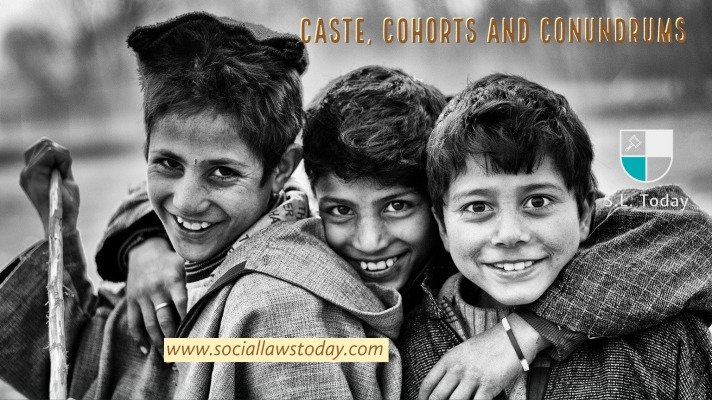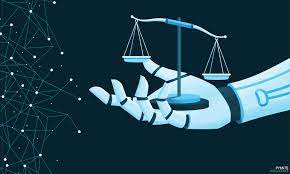
Niharika Raghuwanshi , 15 November : Caste System
Sinking deep down into the travails faced by a human, who had been born into a lower caste, will justify why the present Indian society failed on an altogether level. Caste, more relatable as jati, has done more damage to the fabric of this nation than any other socio-political menace. It comes to reinforce its damage in its still thousand variants. Modern rational often attempts to challenge caste’s purpose and utility, but blessed as if is the determination of them who strive hard to keep this century-old ghettoization of Indian social life still virile.
Hathras, was the sensation back all these days for all bad reasons. A district, once better known for its Puranic history and folklore, stuck Indian citizens in awe. Interestingly the mayhem regarding which this place was in headlines, was due to the malfunctioning of the entire state machinery and had nothing to do with the place per se. The actual disgust arose out of an alleged heinous crime, but still enervating was the way the case was handled. A lot went through after the days of proceeding the incident. But still inching upon the issue is the conundrum – what keeps the caste system virile?
Our Indian society has over centuries mechanized ways and dimensions within which sphere our social, cultural, economic and psychological affairs revolve. Caste system has held the baton to work out implementations which keep these segregation intact. All segregations are arranged in a hierarchy. Hierarchy is in terms of social and economic pursuits and cultural goals. Each upper level suppresses the lower one. Suppression does not permit social upliftment and mobility. Moreover each caste and its sub-caste have an accompanying faith system, a demi-god story and a spiritual binder. These all systemic belief systems obfuscate an individual’s overall well-being. What’s more disturbing is that over time this has become a morass. Leaving the metropolitans which form a miniscule minority, much of the Indian society is still caste ridden. Situation turns grim in the face of crime incidents like Hathras and Badayun. The police not registering the FIR initially, as alleged, gave the example where this belief system of caste transcended to the travesty of justice.
Over time headlines which had crashed TRPs, have now sidestepped the issue. But less have been spoken and written to defenestrate the cause which has been in operation since centuries abound. Matters will worsen over years if we do not allow ourselves to change. The habit to skip over sensational issues without contemplating the lacunae which the society is ridden with, will ensure these incidents keep on happening again and again.
To better dichotomise the issue let’s delve into the fundamentals of political parameters within which a society must function. An individual deals with two basic institutions – the state and religion. The latter being a matter of choice for some. The state is certainly influential since it governs us. Our economy, political machinery, education, recreation, healthcare and social security lies in its exercising ability. Religion on the other hand, comes along with a set of regulations coursed over centuries through customs and rituals. It may not encompass the over-arching features like the state, but it does certainly has a bearing on our larger selves. Belief system and state machinery must not converge. The two systems being very different have their still different requirements and different outputs too. Religion must not overlap state function. And so must they operate independently. Now often which happens, is that the uninitiated populace does not know the consequence if the confluence of these two institutions happen. For religion, its call of duty is supposed to come from a higher authority, God. The agents who interpret the authority’s function could be clergy, Brahmins, rabbis, Maulvis, etc. State’s allegiance on the other hand is for the people. Laws of social justice, equality, liberty, rights and duties are the guiding principle for the state. If religious authority attempts to replace state ideals, the society cannot question upon the conducts or actions with which it is being governed, for the call of duty is coming from a highest source.
Our modern society is fast paced, instrumental complexities are being added every day. This will offer a religious society to change and adjust. But will customs and rituals resort to changing shorelines. Indian society too is highly religious. And this has nothing to worry about. What is actually to worry about are the doctrines which religious authorities subscribe to. Caste has been one of them. Each sub-caste subscribes to a customary bridged profession. The legitimacy of which basically comes from a higher authority. To question it can amount to blasphemy. Further, agnostics and atheists have a questionable position thus. The Hathras case is not peculiar in itself. As a matter of fact, it proceeds on caste lines very well. What peculiar is, the function of the state police and the administration. Can one accede to the fact that the ideals of social justice and fundamental rights were not obliterated. Maiming the voice of the marginalized can never be legitimised. Maybe caste can bestow some of it, Caste system for the Valmiki community offers professional badge of treason and dishonour. For them, the higher authority seems to love them, the least. Still they could hold some hope with the state institutions, but even that was vile. Personally shocking the conscience of the Supreme Court, which took a suo motu cognizance of the Hathras case, held that Indian society has not changed even after the international disrepute from the Nirbhaya gang rape case. Fast-track judicial proceeds took eight long years to provide justice to Nirbhaya. Institutions too have aggravated the menace somewhere.
Political, judicial and social disequilibrium can wreak havoc. The urgency is for the people to realize that cohorts and compartmentalization of their own society is very harmful. The state machinery instead in pursuit to cover up crimes must expedite to act swiftly. Judicial probes too must channelize its instrumental powers to bring justice timely and securely. While the issue of caste is still large and grim. Indian society though politically democratic is quite still driven by the diktats of caste cohorts and differences. One can poignantly verify it in villages. This has played a major role why land reforms failed in India, literacy count is so skewed, social benefit schemes are erratic, benefits of reservation becoming uneven, ghettoization of profession, and dignity of labour is so high here. Caste promises you a social elevation and social denigration just by the virtue of your birth. Struggles, achievements, scientific contribution and social service are meaningless for they ever will not initiate a mobility upwards in the caste ladder. Stagnancy is what defines it. But people and the so called saviours of social cultures forget that professions are changing, morality is changing, the globe is changing. Stagnancy will no longer hold the graduations of changing constants. Organizations are indeed man-made and had been designed to suit a particular contextual timeline. This cannot make them static. Caste would have slightly made sense if it had been non-hereditary specialization but its present form is deplorable.
When cataclysm is at the doorstep, sanity gives away to sunder! Mindless obeisance to incongruous directives is destined to meet doomsday. Caste, its conundrums and organized cohorts are waiting for one!
Niharika
Subscribe to our newsletter!



Leave feedback about this